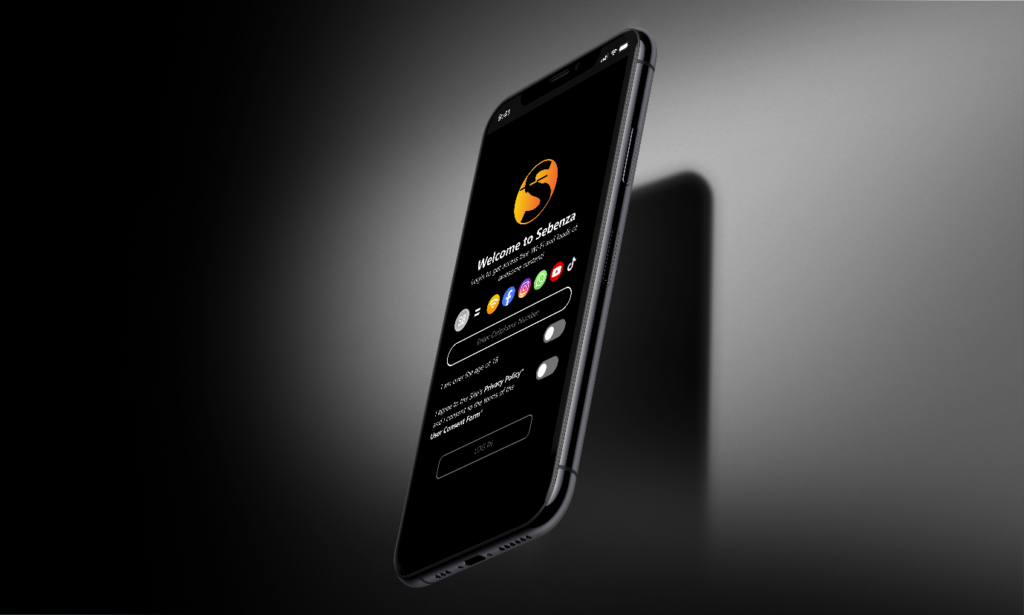Embracing the Dark Side: Applying Dark Mode to the Latest Version of the Sebenza Platform
Reading time: 4 minutes
Author: Brian Nonjiji, UI/UX Designer

Source: Sebenza new platform login screen, Sebenza Wi-Fi
The dark mode has become part of our digital lives from our phone UI, wallpapers, and favorite apps. We have become so accustomed to this one “small” feature that a massive outcry from users occurs when unavailable. A good example was Twitter, which after three years of Google launching dark mode for Android, finally offered it onto their app in 2019. However, the dark mode is far more than just aesthetic when added to an app as part of an update. It also has some practical applications, which I will explore, and how it affects the latest version of the Sebenza platform.
What is dark mode?
Dark mode, essentially in its simplest form, is a feature that inverts the “normal” display of white backgrounds with back text into black backgrounds with white text. The “normal” or “light mode” is a skeuomorphic approach that early UX designers took to get users to interact with the first computers. Their strategy was creating interfaces resembling everyday objects like paper to make users comfortable engaging with the interface. This approach is especially important when you’re not from a programming background with a more technical look to its UI.
The rise of dark mode: what is the new hype about?
After years of Light Mode, introducing Dark Mode is a breath of fresh air. It allows users to customize their digital environments, like their devices, applications, and much more.
The dark mode also allows tech companies to give their existing interfaces a new look without creating a whole redesign. It is marketed as a solution to our problems from our digital habits, like reducing eye strain and screen-induced headaches.
So, what are the benefits?
Easy on the eyes
Inverting the white and black on the interface allows users to view content on the screen effortlessly. This inversion is vital for this version of the Sebenza Platform as we strive to be the best content provider in the taxi Wi-Fi space. Other benefits of using Dark Mode are reducing eye strain and dry eyes while improving visibility in low-light environments.
This allows us to ensure that the new content on our platform will be easily viewable even over a longer timeframe.

Source: Lady using phone in the dark, Pexels.com
Better for low-light environments
Let’s say you’re a taxi commuter on your way to work, and you’ve woken up extra early to ensure you arrive on time. So you get onto a Sebenza Taxi, connect to the Wi-Fi, and begin interacting with the platform, only for you to have a bright interface shining back at you and the content available to you; your eyes must quickly adjust from the dark interior of the taxi.
As Sebenza, many of our users access the platform early in the morning and late evening/night as they commute to and from their homes. Having the new platform in Dark Mode allows them to view it easily at these times and not disturb those around them.
Battery saver
In these challenging times, the energy crisis has everyone looking for ways to survive during power cuts. The platform, Sebenza, can be accessed during load-shedding because it utilizes the power from taxis and buses. Furthermore, with the introduction of dark mode, we allow our users to extend their device battery life while they access our platform. The power saving, as small as it might be, all add up to a demographic who don’t have access to alternate power sources. A survey we conducted on our platform showed that people pay close attention to their battery life, and many rely on their places of employment to charge their devices as they don’t have power banks.

Source: Amarette website snapshots, dribble.com
A premium feel
Dark Mode UI has been used by some of the most luxurious brands and brands looking to give themselves an exclusive feel. Great examples are luxury watch brands that use a dark UI that allows the watch’s intricate details to stand out, and Netflix, which uses dark mode to make their video streaming service stand out from the competition as a premium service.
When redesigning the Sebenza platform, one of the objectives was to make the platform stand out from the rest in the commuter Wi-Fi space, and Dark Mode allows us to achieve this.
UX design is truly effective when it can address problems and improve the experience of users. The latest version of the Sebenza platform has been a culmination of past learnings from previous versions all rolled together. We have been working hard to create a fantastic product, and we can’t wait for the launch of it for our commuters and the public. Stay tuned to all our socials for more information on what to expect leading up to our launch date.

